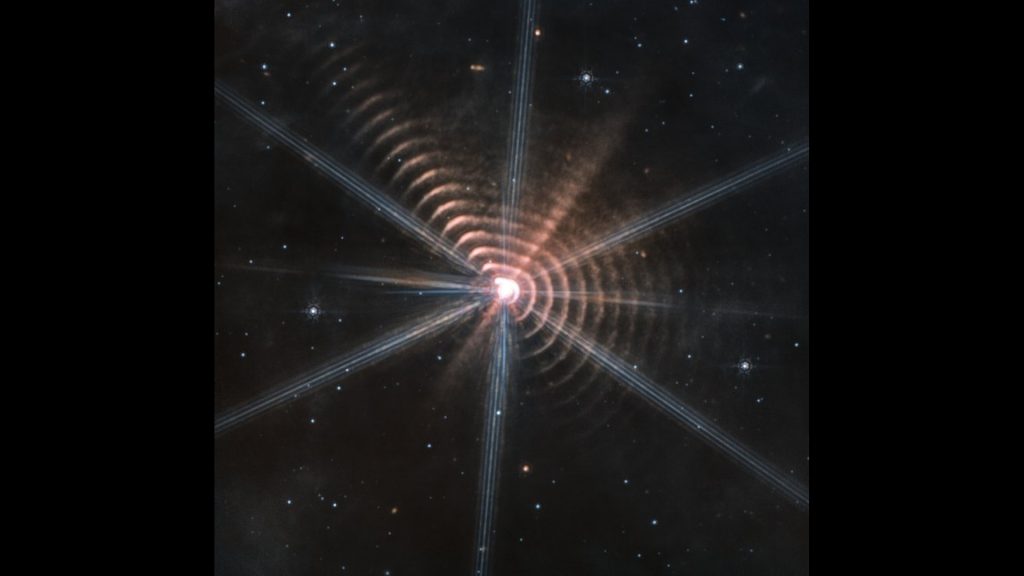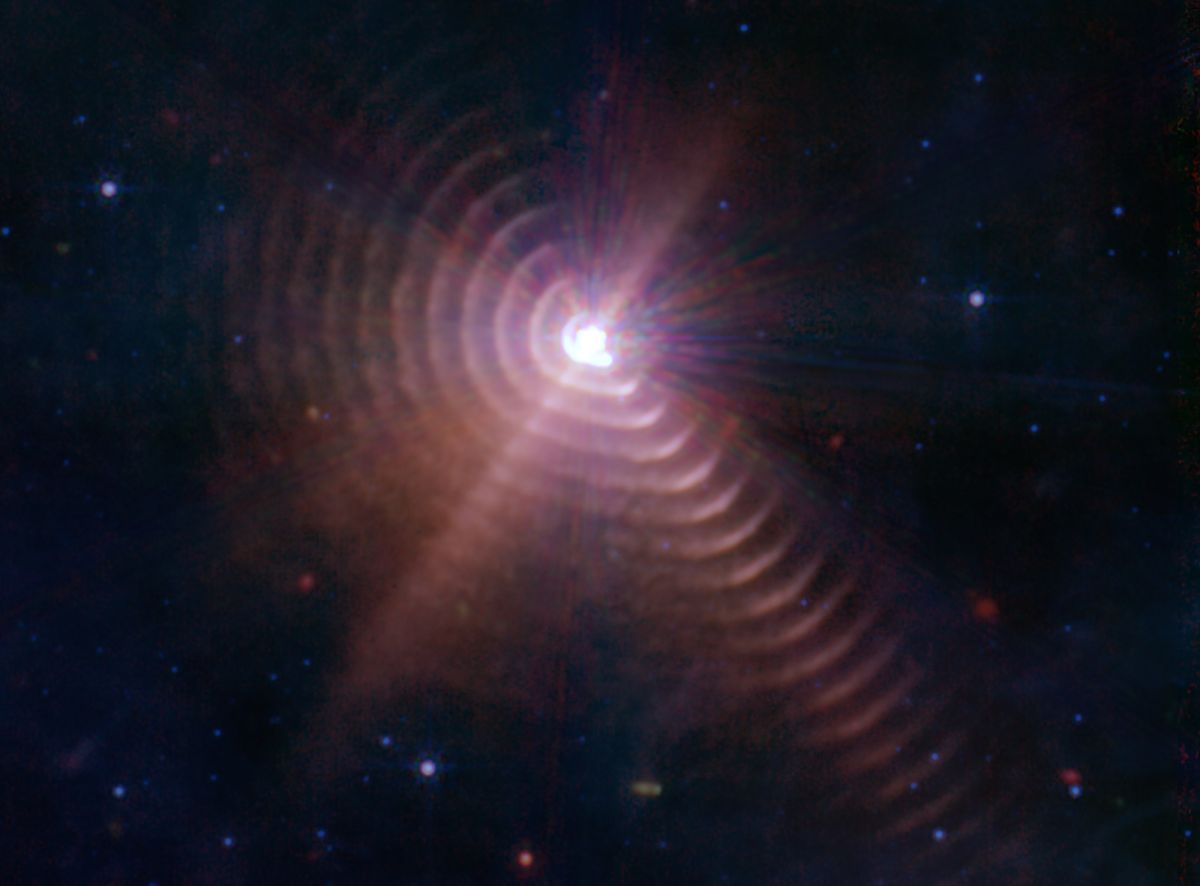The Webb telescope spotted a bizarre set of concentric rings made out of stardust in deep space
NASA’s James Webb Space Telescope continues to reveal images that give a look at the distant universe. The latest is an image of concentric dust rings emitted by a pair of stars, which are over 5,000 light years away from Earth. The pair is collectively known as Wolf-Rayet 140 and Webb Space telescope captures the stellar winds in this image that NASA has shared.

Stellar winds are streams of gas that stars blow into space. When these two stars came close together, their stellar winds met and compressed the gas, creating dust in the process. The orbit of these stars brings them together about once every eight years. These rings mark the passage of time just like the growth rings on a tree.
According to NASA, turning gas into dust requires specific conditions and ingredients, somewhat like turning flour into bread. Hydrogen is the most common element found in stars and it can’t form dust on its own. But the Wolf-Rayet system sheds so much mass that they also eject complex elements that are otherwise found deep in a star’s interior, including Carbon.
After they are emitted, these elements in the stellar wind cool down and are then compressed at the location where the winds from the two stars meet, like when a baker uses their hands to knead dough.

“We’re looking at over a century of dust production from this system. The image also illustrates just how sensitive this telescope is. Before, we were only able to see two dust rings, using ground-based telescopes. Now we see at least 17 of them,” said Ryan Lau, an astronomer at NSF’s NOIRLab, in a NASA press statement. Lau is the lead author of a new study on the Wolf-Rayet system, published yesterday in the journal Nature Astronomy.
There are other Wolf-Rayet systems that form dust but none of them make rings like Wolf-Rayet 140 does. The formation of the rings happens because the orbit of the Wolf-Rayet star in the system is elongated and not circular. The gas is only under enough pressure to form dust when the stars come close together and their winds collide.
The Webb telescope is uniquely suited to help scientists study the dust rings because its instruments detect infrared light. Webb’s MIRI (Mid-Infrared Instrument) detects the longest infrared wavelengths, which means that it can see much colder objects, like the dust rings.

